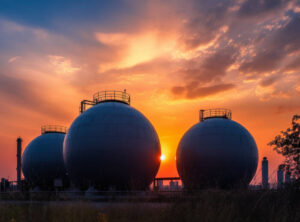Unpacking the Latest Shifts in the Natural Gas Market: What Investors Need to Know
At Extreme Investor Network, we strive to provide our readers with insights that empower smart trading decisions. Recently, the U.S. Energy Information Administration revealed significant developments in the natural gas market that are raising eyebrows and posing questions for investors. Let’s break it down and explore why these shifts could be pivotal for your investment strategy.
First Injection of the Season Raises Red Flags
The latest report from the Energy Information Administration (EIA) showed a surprising 9 billion cubic feet (Bcf) build in natural gas storage for the week ending March 14. This marked the first injection of the season, a clear indication that demand is underperforming compared to seasonal expectations. Most market watchers anticipated a small withdrawal, or at the very least, a flat report—which means this unexpected injection could signal a turning point.
Traders are closely linking this build to stronger-than-expected output from renewable energy sources like wind and solar, which have reduced the necessity for gas-fired generation during a time when heating demand typically remains high. While it’s essential to note that overall inventories are still significantly lower than last year and below the five-year average, the market’s immediate response suggests that the storage gap is becoming less of a concern as we transition into the shoulder season.
What This Means for Investors:
The unexpected injection could indicate a shift in market sentiment. Investors should be cautious about betting on short-term price recoveries without considering broader supply dynamics and weather influences. Keeping an eye on renewable energy performance and its impact on natural gas demand will be critical in the coming weeks.
Weather Continues to Undercut Demand Potential
One of the dominating narratives this season has been unusually warm weather across much of the U.S., which is dampening heating needs. With forecasts projecting temperatures ranging from the 50s to the 80s in various regions, both residential and commercial consumption is likely to stay subdued.
Although colder fronts are anticipated to skim through the East and West coasts, their anticipated impact appears minimal in terms of altering demand trends. If the weather pattern continues to favor milder conditions through early April, traders will likely remain hesitant to anticipate any significant uptick in heating-related consumption.
Key Considerations for Investors:
For savvy investors, this presents a critical moment to reassess positions in natural gas. The correlation between weather patterns and energy demand cannot be understated. Monitoring weather reports closely could provide tactical advantages, as the prevailing mild temperatures could dictate pricing for the coming weeks.
Supply Steady, LNG Flows Higher—but Bulls Lack Catalyst
On the supply front, U.S. dry gas production remains strong, preventing any major disruptions in the market. Notably, liquefied natural gas (LNG) exports have shown an uptick, reaching 16.0 Bcf per day last week due to increased feed gas demand at U.S. export terminals.
While this spike in exports is advantageous and contributes to price stability, it hasn’t sufficed to offset the bearish atmosphere shaped by sluggish weather and seasonal shifts. Traders are now in a wait-and-see mode, focusing on whether exports can consistently rise and if production will begin to taper.
Strategic Insights for Investors:
For investors in LNG, the current scenario may require a nuanced approach. While higher exports can buffer prices, the overarching supply-demand balance and environmental factors play a pivotal role. Evaluate your strategies in light of these dynamics—consider diversifying or adjusting positions to align with predicted trends.
Conclusion
As we at Extreme Investor Network analyze these intricate developments, it’s clear that the natural gas market is facing a period of significant shifts. Keeping informed and adaptable is essential. Weather conditions, production trends, and unexpected storage injections are just a few of the factors that can sharply influence energy prices.
By staying abreast of these changes and examining their potential impacts on the market, investors can position themselves advantageously, ensuring they’re not left behind as new trends emerge in the energy landscape. Keep following our updates, as we dig deeper into the intricacies of the stock market and beyond to help you navigate this complex terrain with confidence.

